The Dell XPS 15 9550 Review: Infinity Edge Lineup Expands
by Brett Howse on March 4, 2016 8:00 AM ESTDisplay
Dell offers two displays on the XPS 15. The base model is a 1920x1080 IPS panel. It’s likely reasonable for most people, but for this review Dell configured out review unit with the upgraded 3840x2160 (UHD) display. This is more than just a resolution bump too. The UHD display also has a backlight which can cover 100% of the Adobe RGB color gamut, or so Dell claims. The standard offering is sRGB only, and the Adobe RGB color space is quite a bit larger, offering more saturation in colors.
However, the majority of the web and most consumer-grade applications are made for the sRGB color space only, so if you use an Adobe RGB display with sRGB as the expected color space, you’ll get an oversaturated image. Display manufacturers combat this by generally offering a way to pick which color space you want to work in. If you are browsing the web, you can choose sRGB, and if you are touching up photos that were captured in Adobe RGB, switch the display to that color space. Dell does this through their PremierColor application on the XPS 15
You can easily switch between the color spaces, as well as several others including DCI-P3 (though I would be somewhat surprised if it could hit it at 100%) and Rec. 709 (which is functionally identical to sRGB), depending on what you are working on. If you open the advanced features, you can tune the color temperature, gamma, and black levels as well. If you don’t have color calibration hardware, this is a quick and dirty way to adjust the display to make it more pleasing.
While we’re in here, Dell also offers another cool feature with this software. They call it the Display Splitter, and its basically an improved version of Windows Snap. You can pick how you want to segment your display, and then when you are dragging windows around, the Display Splitter image will appear. Put the window on the box you want, and the software automatically resizes it and snaps it to the correct location. This is pretty great, and Microsoft should take note of this and work with Dell to get it added to Windows.
Back to the display though, there is sometimes some misconceptions that a display that covers Adobe RGB is going to be more accurate out of the box than one that does not. In fact, it really has no bearing on accuracy at all. What Adobe RGB does is offer a wider gamut of colors, and its up to the laptop manufacturer to ensure that the correct calibration is done to map the correct colors to the display output. To test this, we use SpectraCal’s CalMAN 5 software with a custom workflow. Brightness and contrast are measured with an X-Rite i1Display Pro colorimeter, and color accuracy is tested with an X-Rite i1Pro2 Spectrophotometer.
Brightness and Contrast
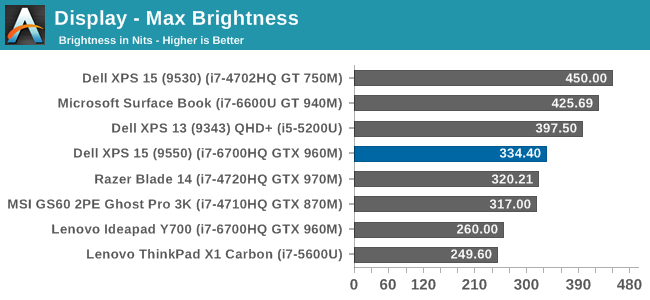
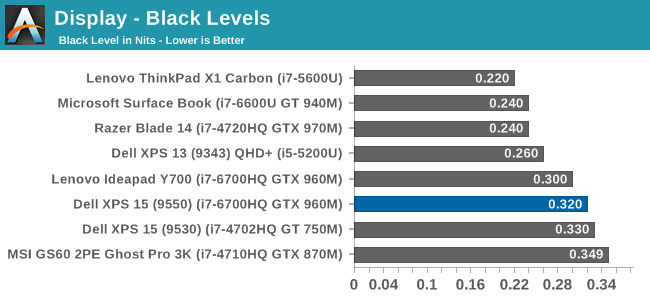
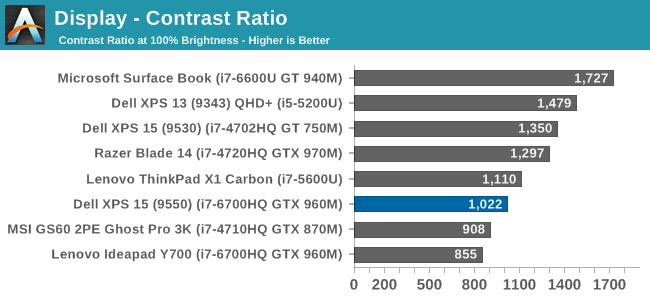
The XPS 15 display can get up to 334 nits, which is plenty bright enough for most tasks, and impressive considering the resolution. Good black levels also lead to a contrast ratio over 1000:1, which is respectable. It’s not class leading anymore, but it’s still a good result. For those that are interested, the display will also go all the way down to 13 nits which should be dim enough for working in the dark.
Grayscale
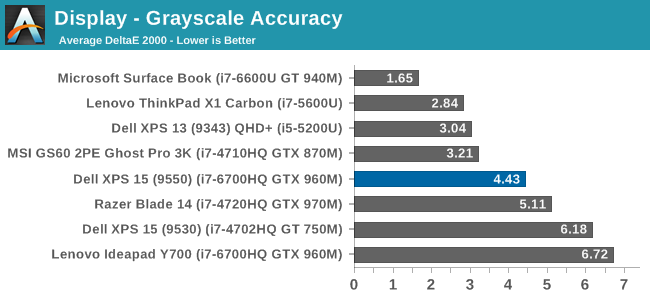
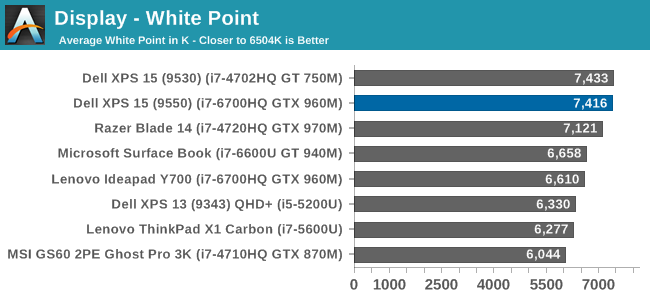
sRGB Grayscale
Adobe RGB Grayscale
Out of the box, the grayscale is not very accurate in either the sRGB or Adobe RGB color spaces. The display has a definite blue cast to it as well, and that plays out in the high color temperature. Gamma is quite good though on both, but Dell should have provided an ICC profile at the minimum to help out with grayscale (or better yet, a calibrated LUT). The UHD display is over a $300 option, so it should be much better calibrated than it is. The color comparator shows how blue the images are.
Saturation
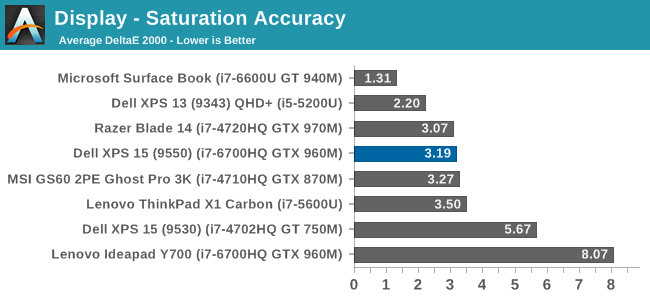
The saturation tests show a better picture than the grayscale though. On both color spaces, the saturation sweeps track nicely all the way to the edges of the gamut. Really only the poor showing on 100% white throws these scores off, with both having an average under 3.0. The images show just how much wider the Adobe RGB space is, and it’s great to see accurate tracking in both modes.
Gretag MacBeth
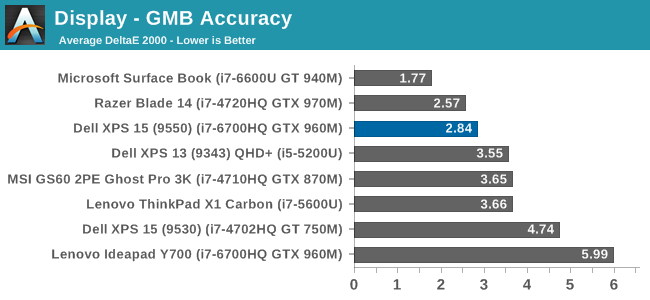
The most comprehensive test is the Gretag MacBeth, which tests an assortment of colors all over the spectrum. It has quite a few flesh tones tested as well. The XPS 15 does ok here too, but is certainly let down by the inaccurate grayscale results.
Calibrated Results
Luckily the biggest issue with the XPS 15 display is grayscale, and that is the one thing that can be adjusted through calibration. I ran the calibration on both the sRGB space and the Adobe RGB space. This had a much bigger impact on the GMB and Saturation scores than normal, since it was the inaccurate grays that were impacting the scores the most.
In sRGB mode, the Delta E for grayscale dropped to 1.6, saturation accuracy was 1.33, and GMB was 1.61, all of which are much better scores than the uncalibrated results. Adobe RGB had an even better grayscale Delta E of 0.9, saturation of 1.0, and GMB of 1.2. Once calibrated, this display is highly accurate. It’s just too bad that Dell didn’t take the time to calibrate it at the factory.
Other than the grayscale issues, the UHD display in the XPS 15 is quite good. It’s great to see more devices starting to offer wider color gamut support, and Dell was good enough to include software to switch the color space as needed.


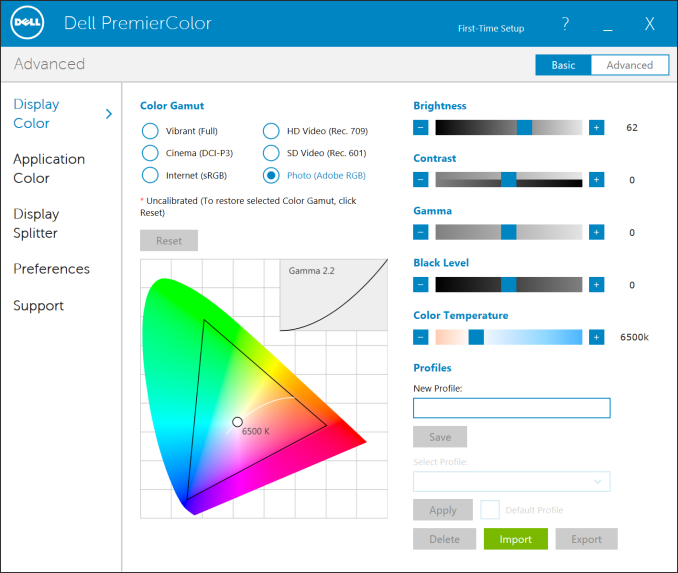

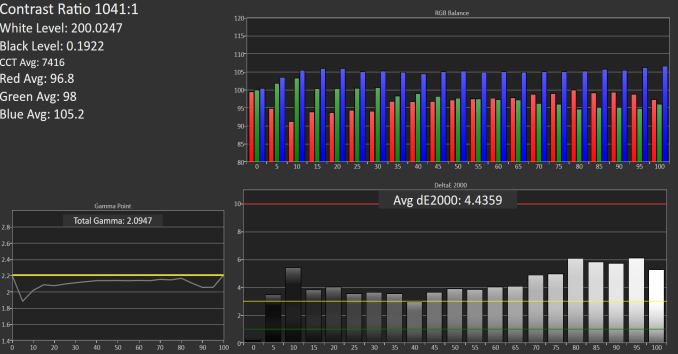

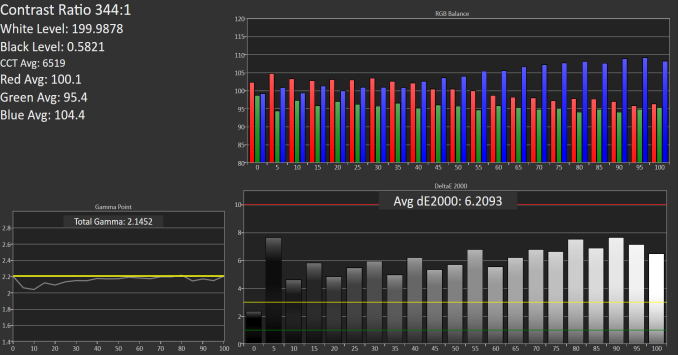


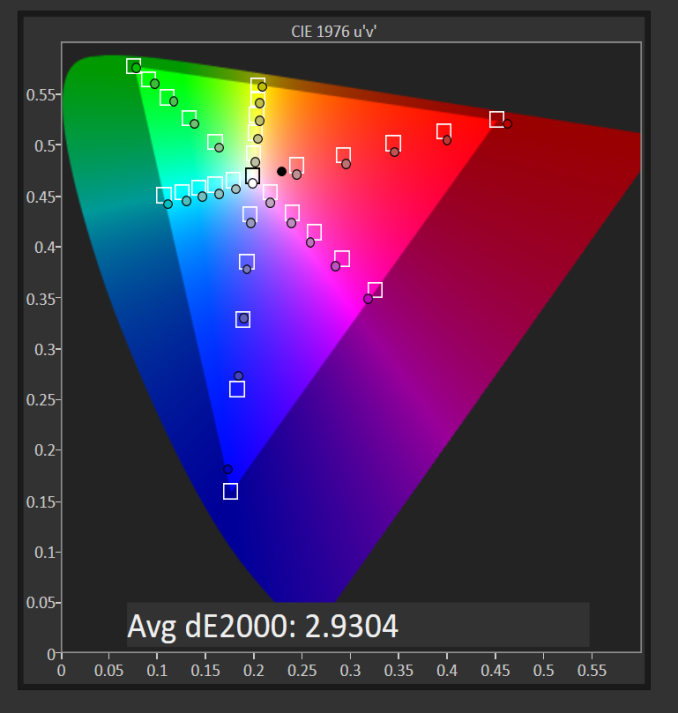
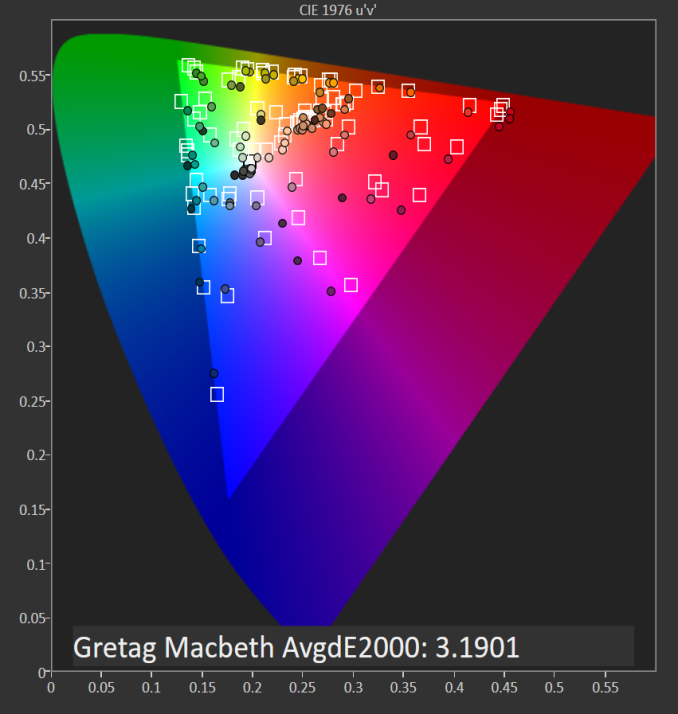

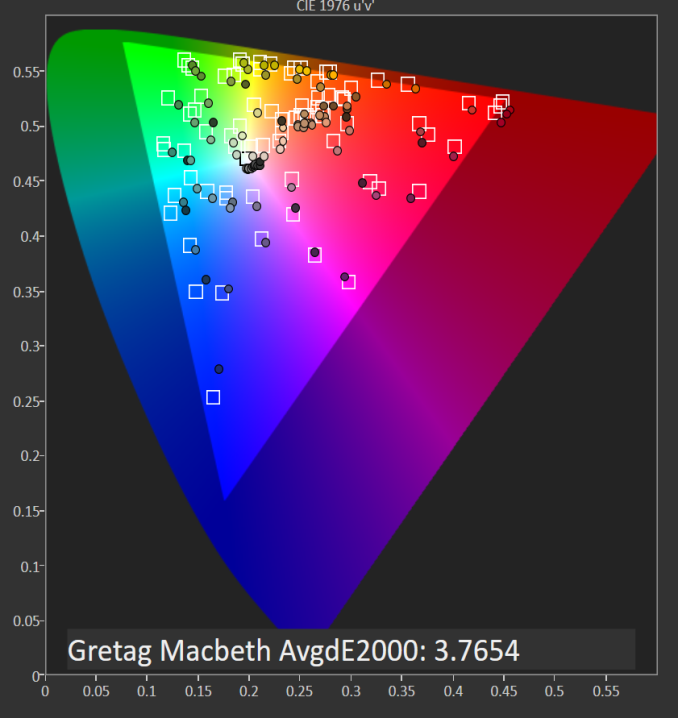















152 Comments
View All Comments
close - Tuesday, March 8, 2016 - link
What I'm telling you is that if that is your honest opinion then you weren't reading Anandtech 5 years ago and that you lost the gamble when you assumed nobody will catch on to your BS.And because when I say something I like to make sure I have a sure way of showing it (not just BS) here it is: http://www.anandtech.com/show/4083/the-sandy-bridg...
I would let you draw the conclusion all by yourself but I am confident now that you will be unable to. That is a review for a motherboard with the infamous P67 chipset that was recalled (!) just 4 weeks after the review was written. And yes, this article is 5 years old. And yes, it was written by Anand himself.
http://www.anandtech.com/show/4142/intel-discovers...
Nightwolf1 - Monday, March 14, 2016 - link
Couldn’t be more true!Look here "Issues":
http://www.ultrabookreview.com/10234-dell-xps-15-9...
HurleyBird - Monday, March 7, 2016 - link
Try selecting high performance power mode in Nvidia's drivers. That's how I eventually was able to fix the frequent crashes I was experiencing with the GTX 960m.milli - Monday, March 7, 2016 - link
Yeah, the Dell driver and performance mode in nV-cp are the only way to get it running for more than 5 minutes. I also installed the beta Intel 4380 video drivers but I haven't yet tested Optimus again.euskalzabe - Friday, March 4, 2016 - link
Guys, seriously. Shoot RAW pictures and process them. The distortion in many of the pictures you posted gives Anandtech an embarrassingly low-level image. This is not a blog ran on grandma's basement. Shoot RAW, process with PhotoShop or similar, get rid of those distortions. Many people would be so put off by the low quality of the image that they won't consider the product. It's just so unprofessional.rpg1966 - Friday, March 4, 2016 - link
Which pictures are you referring to? But regardless, anyone who is put off a machinelike this based on a bit of distortion in a review image is probably in the wrong market.euskalzabe - Friday, March 4, 2016 - link
For instance:http://images.anandtech.com/doci/10116/SizeCompari...
http://images.anandtech.com/doci/10116/KeyboardB.j...
http://images.anandtech.com/doci/10116/Bottom.JPG
http://images.anandtech.com/doci/10116/Open_678x45...
Don't give me that "wrong market" excuse. Correcting distortion takes 1 click, 2 seconds on Photoshop. Many cameras by now just do it automatically if you are shooting JPEG, all it takes is activating it. It takes minimal to zero effort. I don't know what field you work in, but any respected company that has any sort of visual (printed, digital, etc) presence would never accept the IQ I've been seeing in Anandtech since Anand left (which occurred occasionally before that too). It's such an easy fix. Not doing it is incredibly unprofessional.
nathanddrews - Friday, March 4, 2016 - link
I would argue that anyone that buys a product based upon how good it looks in pictures is the exact opposite of a professional. Also, it's not AT's responsibility to sell the products.I have noticed a marked increase in "straight from the hip" photography on AT as well, but I can't imagine a professional - to use your words - not buying a laptop based upon a review website's photos. If you were to order this laptop from Amazon, Newegg, Best Buy, or Dell, they would have plenty of stock, photoshopped photos or renders to make it look all pretty and shiny. If you go into a store to buy it, you can see it on the shelf.
euskalzabe - Friday, March 4, 2016 - link
Clearly you guys don't work with media materials. Most editors would not accept these standards. At the end of the day, that's what it's about: quality standards. Sure, we don't have to correct distortion, but what does it say to the world when you choose not to do something that takes 1 second of your life to improve your visual standards? Whatever your opinion, there is proof - just look online for articles on the matter - that these little details make a difference in people's perception.Frankly, I've long believed there's a reason The Verge has become so popular so fast and it mainly has to do with public image. Check, for example, how they showcase this XPS15 in their review:
https://cdn3.vox-cdn.com/thumbor/-x0jfGXnaZuQRTbXG...
Feel that difference. Accurate representation of the product. Not distorted. The editors interest in their visual presence has an impact not just on how readers view the product, but also how they view the website. You're careless in one glaringly obvious aspect, who knows what else you're being serious about? It's about professionalism. I respect your opinion that focusing on properly processed (not just good looking, there's more to this than subjective evaluation) pictures is not professional, but I can tell you, the market very clearly has decided otherwise.
Don't forget AT is not just read by professionals that look for HW specs VS value. There are many consumers that give life to these ads. Consumers that are as influenced by visual presence as anybody else. It's not about convincing people, it's about aspiring to quality standards. When you can't be bothered to implement a dead-easy fix... that says very little of your interest/effort in other areas of your professional venue. In my professional experience, visual presence has proven to be very important and judged both consciously and unconsciously.
shadarlo - Friday, March 4, 2016 - link
If you think the link you just posted makes this laptop dramatically more appealing then you sir live in some alternate universe than the majority of the population. You might be insanely good in your field, but you have lost the forest for the trees.I honestly don't even like the picture you just linked to. As a non-designer I think the shot looks cheap and bland.